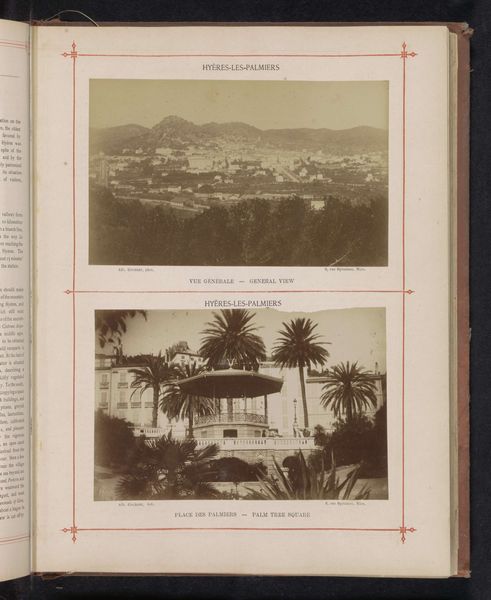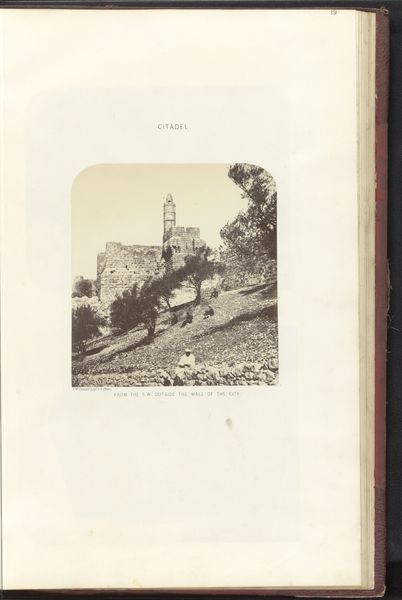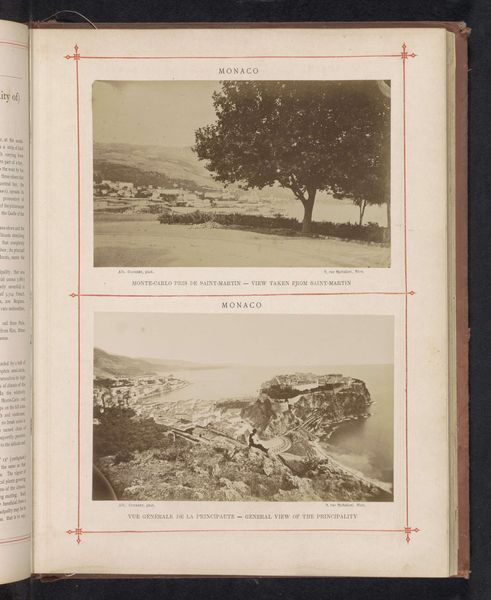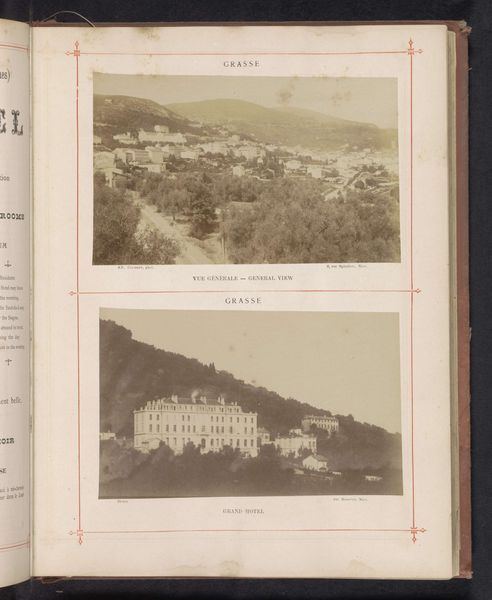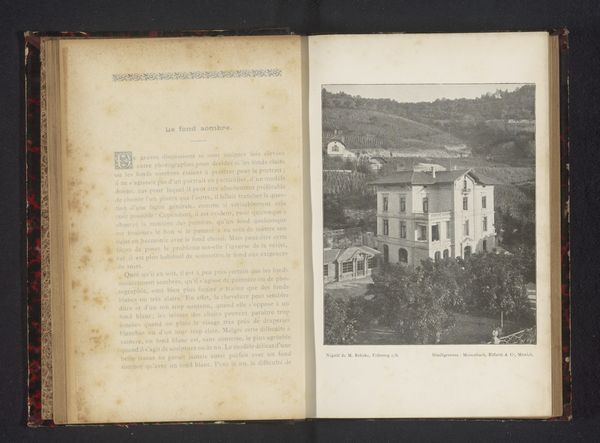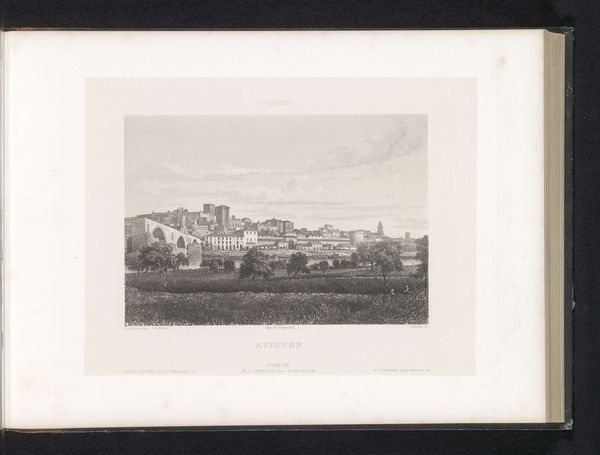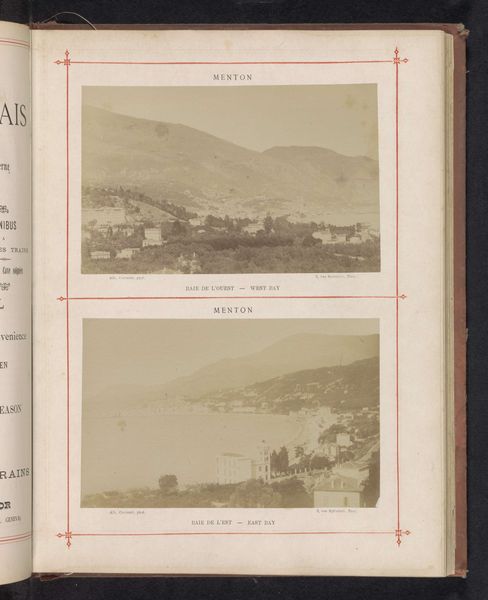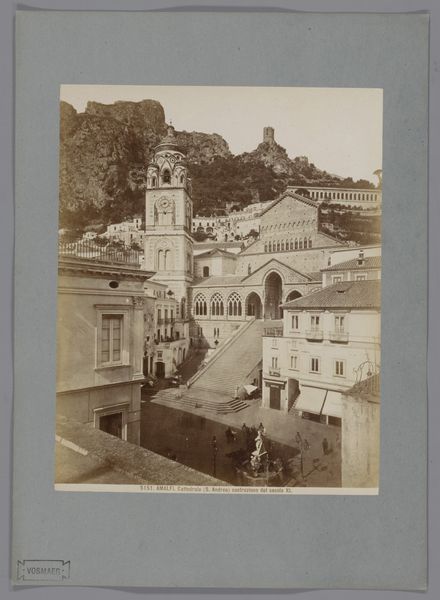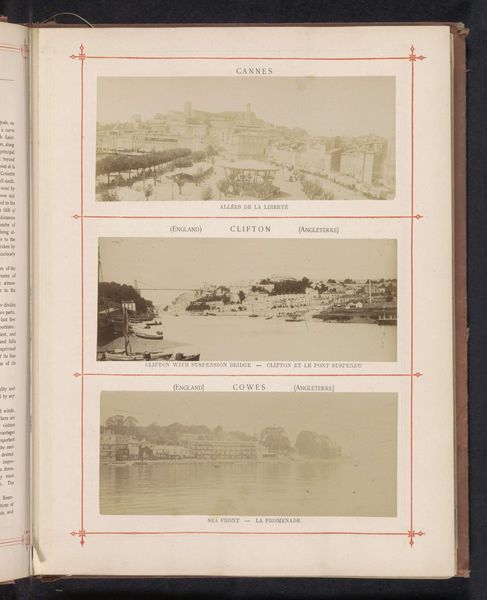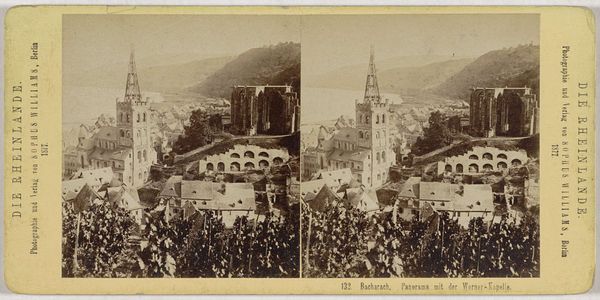![['The gardens', 'The theatre of the casino'] by Albert Courret](/_next/image?url=https%3A%2F%2Fd2w8kbdekdi1gv.cloudfront.net%2FeyJidWNrZXQiOiAiYXJ0ZXJhLWltYWdlcy1idWNrZXQiLCAia2V5IjogImFydHdvcmtzLzEzMzc4NDNhLTgzNjQtNDkxMi1iZGNlLTMyOGJkOTViZDQ4ZC8xMzM3ODQzYS04MzY0LTQ5MTItYmRjZS0zMjhiZDk1YmQ0OGRfZnVsbC5qcGciLCAiZWRpdHMiOiB7InJlc2l6ZSI6IHsid2lkdGgiOiAxOTIwLCAiaGVpZ2h0IjogMTkyMCwgImZpdCI6ICJpbnNpZGUifX19&w=3840&q=75)
photography, albumen-print
#
neo-impressionism
#
landscape
#
photography
#
orientalism
#
cityscape
#
albumen-print
Dimensions: height 340 mm, width 260 mm
Copyright: Rijks Museum: Open Domain
Curator: What immediately strikes me is the overwhelming stillness, despite it being a cityscape scene. A serenity almost... Editor: Indeed. This photographic work, captured before 1886 by Albert Courret, shows, on one part "The Gardens" and another the grand "Theatre of the Casino" in Monte-Carlo, in an albumen print. The sepia tones imbue it with an aura of nostalgia, an idealized past perhaps? Curator: The palm trees certainly evoke a certain exoticism. The gardens with the distant mountains in the backdrop are such common visual markers. I'm drawn to the compositional tension – the wild nature versus human architecture and cultivation. The album print almost memorializes the site and monuments in time... What could be made of the symbolism, historically speaking? Editor: The photographs' presence in the album format is really telling; the sites presented are like postcards and are framed under a new aesthetic ideal. The gaze associated with tourism, power and class cannot be removed here. What can these photographs of nature tell us about social structures during the time period in which these monuments are created? Who enjoyed that scenery? Who was invited to perform and spectate at the Theatre of the Casino? What about its relationship to neo-impressionism and orientalism with the use of lighting techniques and cultural referencing? Curator: It's fascinating how the carefully constructed gardens mimic the stage. What can a comparison of the real-life location and performance say about this moment of image production? It also reveals the theatricality of social life itself, don't you think? This interplay suggests a deliberate manipulation of nature and societal roles for the elite. Editor: Right. And Courret is not just passively capturing an image; he's actively shaping a narrative about leisure, wealth, and privilege, contributing to the construction of Monaco's image as a playground for the wealthy during that time. Curator: Examining these photographic albums, we understand how symbolism can be leveraged not only in fine art, but across all forms of visual media. I now wonder, with each look, how can our knowledge shape our visual appreciation and awareness? Editor: By interrogating these "snapshots," we understand photography as another way of perpetuating class differences and global power dynamics that are still resonant in tourism and representation today.
Comments
No comments
Be the first to comment and join the conversation on the ultimate creative platform.
